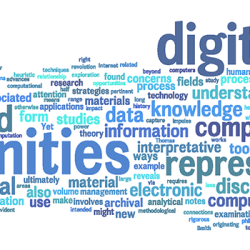
I’ve started the 2012 fall semester with a new G.A. position working for Dr. Cassidy Sugmioto on a grant titled Cascades, Islands, or Streams? Time, Topic, and Scholarly Activities in Humanities and Social Science Research. The grant was awarded through the NEH and the Office of Digital Humanities and was part of the Digging Into Data challenge. The official grant description reads:
This project will examine topic lifecycles across heterogeneous corpora, including not only scholarly and scientific literature, but also social networks, blogs, and other materials. While the growth of large-scale datasets has enabled examination within scientific datasets, there is little research that looks across datasets. The team will analyze the importance of various scholarly activities for creating, sustaining, and propelling new knowledge; compare and triangulate the results of topic analysis methods; and develop transparent and accessible tools. This work should identify which scholarly activities are indicative of emerging areas and identify datasets that should no longer be marginalized, but built into understandings and measurements of scholarship.
I’m extremely excited about this G.A. position! It will allow me to study, record, and understand communication, connections, and behavior in social network sites (SNS) using a different set of tools and theories and it will allow me to make use of my semester AI’ing with Dr. John Walsh on his S657 Digital Humanities course and my past five years of experience working in the digital humanities (DH) realm and developing/designing DH websites and tools for the Chymistry of Isaac Newton project, TILE, and other projects.
It’s an ideal opportunity and I’m so lucky that I asked to audit Dr. Sugimoto’s Ph.D. version of her Scholarly Communication course. I was interested in the scholarly communication beforehand after examining how Erving Goffman was cited in a subset of information science (IS) literature (a large portion of the discourse simply cited him ceremoniously). I became quite involved with and interested in the subject of scholarly communication as the course progressed. The course and discussion opened my eyes to vast possibilities outside the simple “citation count” and I became quite interested in the discourse. Later Dr. Sugimoto approached me with the possibility of working together and I jumped at the opportunity.
I came to the project with both excitement and fear, fear primarily because I felt a bit out of my comfort zone as the scholarly communication discourse was still relatively new to me. The other faculty and students working on the project have been fantastic and I’m positive I’ll benefit in a variety of ways from the experience. The fist part of my assistantship will include working with a small group of Ph.D. and masters students set with the task of examining network characteristics of the DH community across a variety of sources including various social network tools/sites, journals, books, and listservs, to name just a few. Some in the DH community have visualized and discussed characteristics of the DH populace (Cleo, Melissa Terras, and Alex Reid, to list just a few) and our group hopes to add to this picture by examining other sources for characteristics common to the DH community.

